The troubled film adaptation was released this week in France, on May 15, 1989…

New looks at old flicks and their comics connections…
—
By ROB KELLY
We lost the great Ramona Fradon in February, at the age of 97. While her life as an artist started and ended in comic books, she spent a large chunk of her remarkable career illustrating a comic strip: Brenda Starr, Reporter.
Brenda Starr, Reporter was the creation of writer/artist Dalia Messick, who submitted numerous comic-strip ideas to newspaper syndicates with no success. Suspicious that sexism had something to do with it, she changed her name to “Dale” Messick and submitted another idea about a beautiful young woman named Brenda Starr who was… a bandit.
The syndicate’s owner, according to a 1960 Saturday Evening Post article, rejected the strip because, “[He] had tried a woman cartoonist once… and wanted no more of them.” But his assistant, a woman named Mollie Slott, saw Messick’s samples, liked what she saw, but instructed Messick to make Starr a reporter, not a bandit. The revised strip was now accepted, but it ran in The Chicago Tribune’s Sunday comic book supplement, not the daily paper.
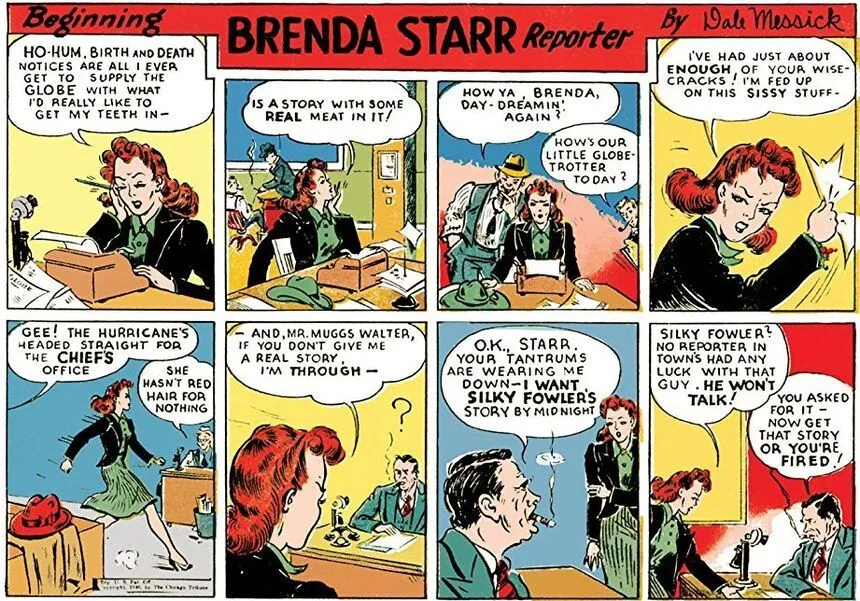
Despite this obstacle, Brenda Starr, Reporter proved popular, and eventually was syndicated in over 200 newspapers. It even inspired a movie serial, 1945’s Brenda Starr, Reporter, starring Joan Woodbury (Charlie Chan on Broadway, King of the Zombies) as the title character, and Kane Richmond (who played Spy Smasher in his own movie serial) as Lt. Larry Farrell, a character not found in the strip. It’s a fairly standard affair, as Brenda escapes one deadly trap after another, chasing a story concerning mobsters and a cache of stolen money.
One pleasant surprise, though, is the serial never condescends or undercuts Brenda as our main character. Sure, it surrounds her with an almost entirely male supporting cast, but Brenda remains brave, smart and competent, and the serial doesn’t waste time with silly romantic subplots. Brenda Starr, Reporter was thought “lost” for decades, with the only known print in the hands of a collector. But it was rediscovered in the early 2000s and can now be found on YouTube and on DVD (though still partially incomplete).
Hollywood tried again in 1975 with a TV movie starring Jill St. John as Brenda, whose dream it was to play the character and was the main driver in getting the project off the ground. Directed by Mel Stuart (Willy Wonka and the Chocolate Factory), Brenda Starr co-stars Sorrell Booke (Boss Hogg from The Dukes of Hazzard) and Victor Buono (Batman’s King Tut) in a story set in modern day. St. John is beautiful and charming as always, but it has very little action and tonally and visually is indistinguishable from a dozen other newspaper-based TV shows from around that time. It was not picked up as a series.
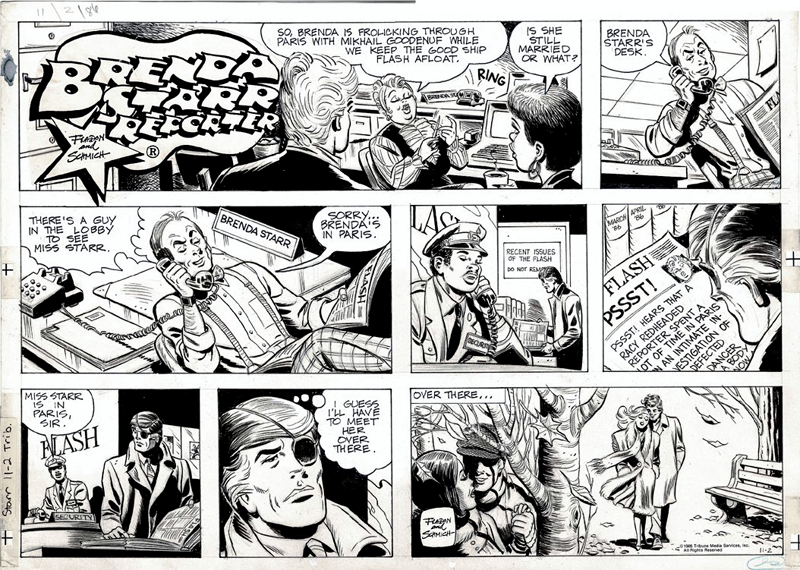
Messick continued to write and draw the strip (a Herculean effort) until 1980, and that’s where Ramona Fradon enters our story. Fradon was coming off a long run on DC’s Super Friends comic-book series, having pencilled over 40 issues. She was ready to move on from superheroes, so she took the Starr gig when Messick chose to retire from the art duties of the strip.
Unfortunately, according to Fradon, Messick proved hard to work with—having drawn her own scripts for over 30 years, she didn’t really know how to collaborate, often giving Fradon sketches that she was expected to follow. Whether they ever worked this out, I don’t know, but nevertheless Fradon brought her peerless draftsmanship to Brenda Starr, Reporter, and ended up outlasting Messick, who retired from the strip completely in 1982. Writer Linda Sutter took over, and the Sutter/Fradon team continued on Starr until 1985, when yet another writer, Mary Schmich, assumed writing duties. It was right after this change that Hollywood came calling again, producing what was supposed to be a big budget movie. Unfortunately, that didn’t quite happen.
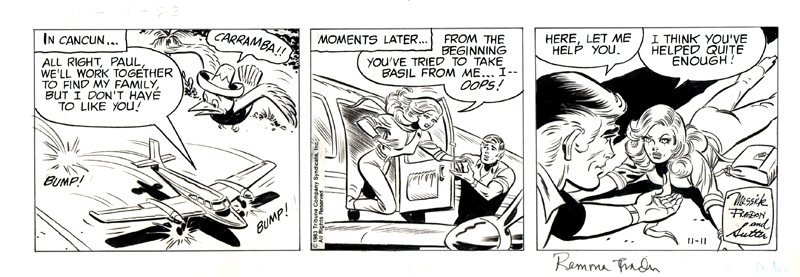
Brenda Starr was originally supposed to star Debbie Harry (the mind reels at that idea) but got mired in development until Brooke Shields—at the height of her fame—expressed interest. After she was brought on, future/current (I’ll explain in a moment) James Bond Timothy Dalton was hired to play Basil St. John, Brenda’s on-again, off-again love interest from the strip.
Set in the 1940s, the cast (including Charles Durning, Jeffrey Tambor, Diana Scarwid and Kathleen Wilhoite) is game, and the film looks pretty good with all the period detail and derring-do action set pieces. But it makes a curious (and, to me, fatal) creative choice—it opens with a guy named Mike Randall (Tony Peck, son of Gregory), who is drawing the Brenda Starr strip. Brenda, who knows she’s a character in a comic strip, gets frustrated with how the story is going and decides to quit, forcing Randall to draw himself into the story and team-up with Brenda. What?
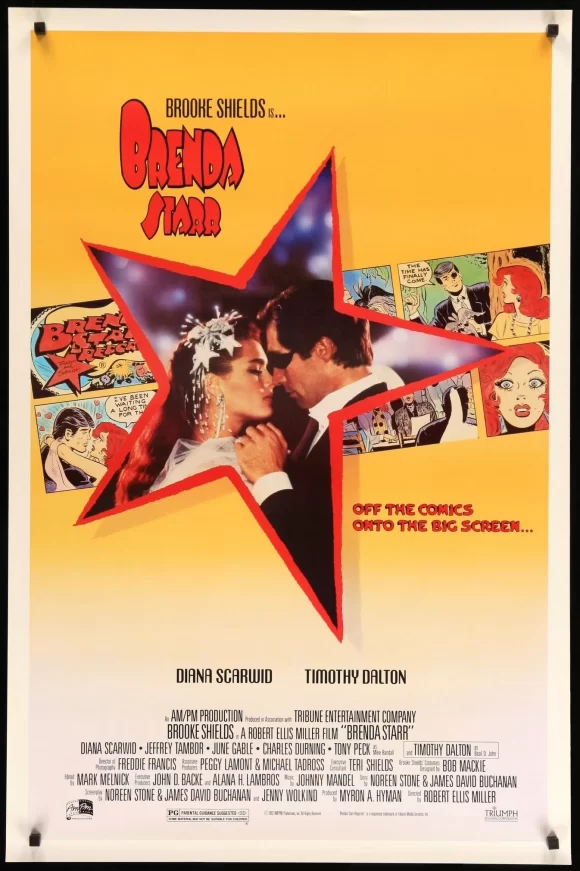
Adding this kind of fantasy element smacks of the filmmakers having zero faith in the source material, not to mention robbing Brenda of any agency in her own story. If Brenda Starr is popular enough to be turned into a movie, why do we want to spend time with some new character that hates working on the very strip the movie is adapting? Adding insult to injury, the person behind Brenda Starr is now somehow a man, erasing Dale Messick (and, to a lesser degree, Ramona Fradon, whose work is nowhere to be seen), one of the very few women to ever create a comic strip in an overwhelmingly male-dominated industry.
Brenda Starr was made in 1986, but due to lots of legal shenanigans regarding the financiers and the rights-holders, the film sat on the shelf past its initial release date of 1987. In the meantime, the producers now had the next James Bond in their movie, and fought to get it released, to no avail. After more legal wrangling, it hit Europe in 1989, not playing in America until 1992, having just missed the first wave of comic book movie adaptations (Batman, Dick Tracy). It bombed, was savaged by critics, and quickly disappeared.
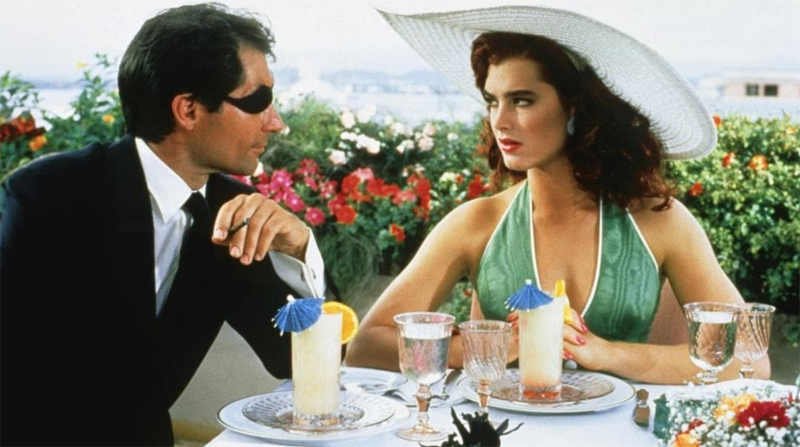
I remember vaguely hearing about Brenda Starr at the time, but it never played anywhere near me. I caught it on home video a year or two later. I had heard it wasn’t good, but it’s got Ramona Fradon’s artwork on the poster, so I thought, well, how bad could it be? Turns out, pretty bad. As I mentioned above, the film looks pretty good and some of the cast (Dalton, Tambor, Wilhoite) seem to know the exact right tone to hit. But every scene with Mike Randall is a complete dud, and stops any momentum the story might have had. Another insult to injury: The film opens with someone drawing the Brenda Starr strip, but the artwork isn’t by Fradon! A gob-smacking choice, to highlight the movie’s comic-strip origins but not use the work of one of the greatest artists in the field, not to mention the person who’d been drawing the strip the last half decade!
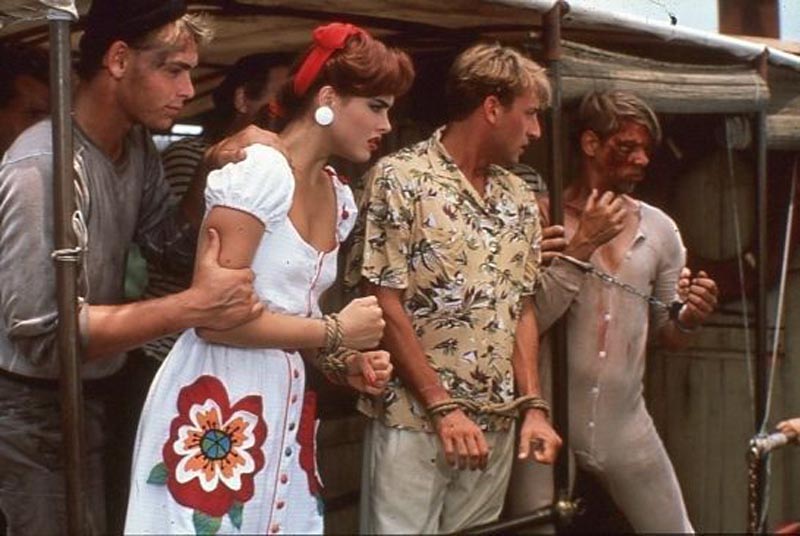
Luckily for Brenda Starr fans, some of the earliest installments have been collected in book form. Unluckily for us Ramona Fradon fans, none of her work on the strip has been afforded that honor. Do a quick Google search and you can feast your eyes on the stunning art she turned out, day after day, week after week, year after year. While the media adaptations of Brenda Starr have been a mixed bag, Fradon’s work was never anything but top flight, and it deserves to be seen by future generations.
—
MORE
— BATMAN RETURNS: How the Comics Adaptation Improves Upon the Classic 1992 Movie. Click here.
— A Colossus of Adventure: 1963’s JASON AND THE ARGONAUTS. Click here.
—
ROB KELLY is a podcaster, writer, illustrator, and film historian. His work can be found at robkellycreative.com.

May 14, 2024
I tried watching this again, a few years ago. Unwatchable. However, the Mike character, working on the strip at the beginning made me do a double take. Mike Grell was Messick’s art assistant for a period of time, and often references it in his lengthy biography as part of his more humble beginnings in the industry. He was allowed to draw most of the panels, except Brenda Starr’s head was ALWAYS drawn by Messick. But the real point here is that, I wondered if the character “Mike” in his job as art assistant was meant to be a nod to Grell.
June 30, 2025
I read the strip in the 7os when I was in High School, but I never heard about this movie. Probably just as well!